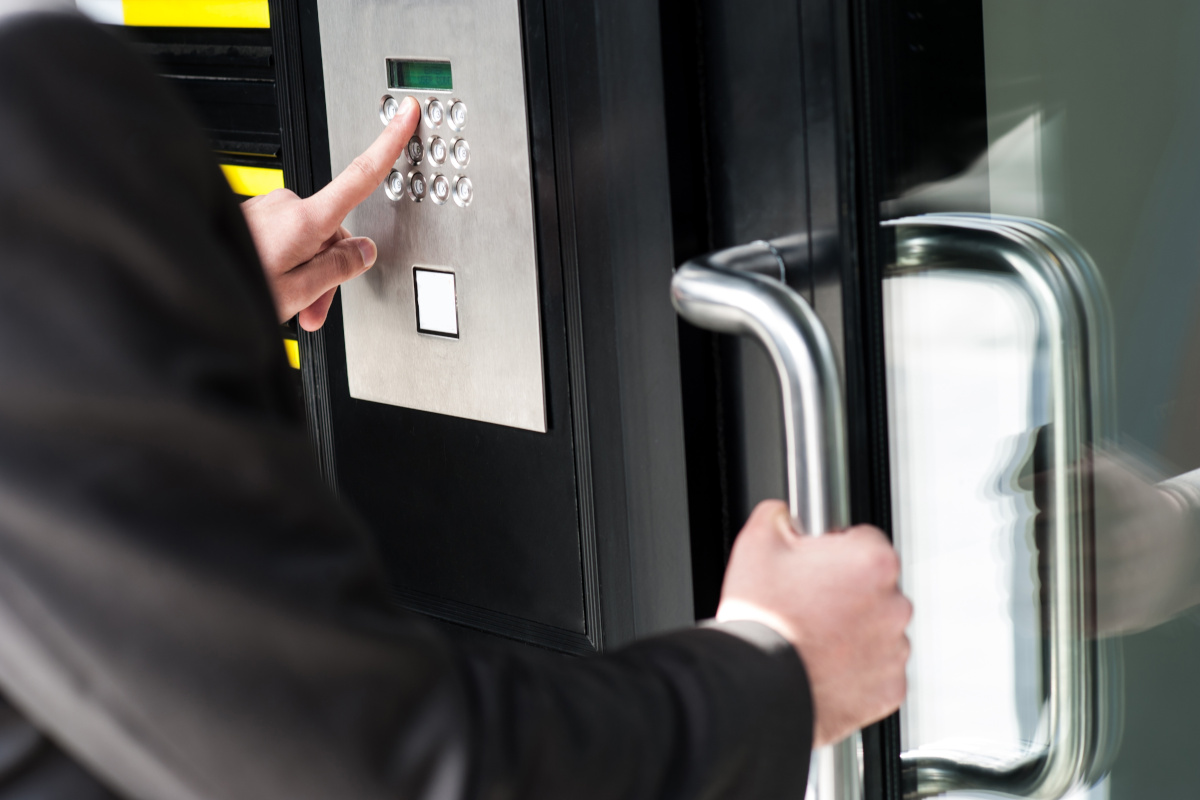Improve Security with Access Control Systems
October 16th, 2023 by admin

Securing both physical and digital domains is a critical concern for businesses today. Access control systems offer robust solutions for guarding valuable assets and sensitive information. More than just restricting unauthorized entry, these systems provide insightful data for refining security management strategies.
In this blog, we will examine how implementing an effective access control system can significantly enhance your organization's overall security measures.
Why Access Control Systems Matter
In an increasingly uncertain business landscape fraught with risks like data breaches and physical intrusions, the need for enhanced security measures spans both small and large organizations. Small businesses often become targets due to perceived vulnerability, while larger corporations attract attention due to the volume of assets they manage.
Versatility of Access Control Systems
Access control systems present a versatile and comprehensive solution to a variety of security issues. They not only regulate entry into facilities but can also be integrated with surveillance cameras and alarm systems for a more robust security infrastructure.
Beyond Gate-keeping: Analytics and Accountability
Modern access control systems often offer analytical capabilities, tracking who accessed which areas, at what time, and for how long. This information provides valuable insights for refining security protocols, adding both deterrence and accountability.
Types of Access Control Systems
-
Biometric Systems
Biometric access control systems use unique physical characteristics—like fingerprints or facial recognition—to grant or deny access.
- Pros: Highly secure and difficult to replicate.
- Cons: It can be expensive and raise privacy concerns.
-
Card Readers
These systems require a physical card to unlock doors or access secure areas.
- Pros: Cost-effective and easy to manage.
- Cons: Cards can be lost or stolen, creating a security risk.
-
Smart Access
Smart access systems use smartphones or wearable devices to control entry.
- Pros: Convenient and can be easily updated or revoked remotely.
- Cons: Dependent on the battery life of the connected device and the potential for hacking.
Key Features to Look For
-
Multi-Factor Authentication:
Multi-factor authentication requires multiple forms of verification, making it harder for unauthorized users to gain access.
- Security Impact: Reduces the chances of a single compromised element leading to a security breach.
-
Time-Based Restrictions
This feature allows you to set time limits for access, controlling who can enter certain areas and when.
- Security Impact: Minimizes risk by limiting access during off-hours.
-
Real-Time Monitoring and Alerts
Modern systems offer real-time tracking and instant alerts for suspicious activities.
- Security and Impact: Enables immediate response to potential security incidents, reducing damage.
-
User Management Flexibility
Systems should allow easy management of permissions, letting you quickly add or remove authorized users.
- Security and Impact: Simplifies the task of keeping the access list up-to-date, lowering the risk of unauthorized access.
Real-World Examples
Google's BeyondCorp
Google implemented an access control model known as BeyondCorp to shift access controls from the network perimeter to individual users and devices. This approach eliminated the concept of a trusted network, significantly enhancing security.
JPMorgan Chase and Co.
After experiencing a major data breach in 2014, JPMorgan Chase & Co. invested heavily in access control systems. They employed multi-factor authentication and stringent access controls to minimize the risk of unauthorized access to sensitive financial data.
Recommendations for Businesses
Conduct a Security Audit
Before investing in an access control system, conduct a thorough audit of your existing security measures to identify vulnerabilities and needs.
Choose a Scalable System
Opt for a system that can grow with your business. Scalability ensures that you won't outgrow your security measures too quickly.
Test Fully Before Implementing
Always test the system in a controlled environment to ensure it meets all your security requirements and integrates well with existing systems.
Train Staff Adequately
Training is crucial for the success of any access control system. Ensure your team knows how to use the system and is aware of new security protocols.
Regularly Update and Review
Security is dynamic. Regularly update your access control systems and review access logs to identify any suspicious or unnecessary activities.
Wrapping Up
Access control systems, in conclusion, provide a multifaceted approach to security that goes beyond simple entry restrictions. From the protection of physical spaces to the security of sensitive data, these systems are crucial to maintaining a secure business environment. With features such as multi-factor authentication, real-time monitoring, and flexible user management, their value is evident.
Businesses that invest in access control systems that are robust, scalable, and well-integrated shall be better prepared to confront the complex security challenges of today and tomorrow.
Is your business as secure as it could be? Access control systems are more than just locked doors. From biometric scans to smart cards, they offer layered security that keeps your premises and data safe. Plus, they're adaptable to businesses of all sizes.
Whether you're a start-up or an established corporation, there's a system that can meet your specific needs. Upgrade your security measures and give yourself the peace of mind you deserve.
If you want to learn more about access control systems, contact us today.
Posted in: Solutions, Infrastructure and Cabling

